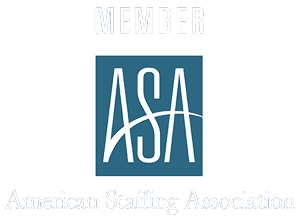Your hiring manager juggles payroll for 50 contractors, rushes to complete onboarding documents for a new client, and eyes three upcoming compliance deadlines. Does this sound familiar? For many staffing firms, this hectic pace is just another day at the office. But when enterprise clients evaluate staffing partners, they’re looking beyond your talent pool.
They want to know if your firm can handle their complex requirements from processing high-volume payroll to managing multi-state compliance. Strong back-office operations give you that foundation. When everything behind the scenes runs smoothly, you can confidently pursue bigger clients and say “yes” when major opportunities come knocking.
What Back-Office Operations Really Mean
Back-office operations are the essential behind-the-scenes work that keeps your staffing firm running smoothly. Think of it like the kitchen in a restaurant – while your recruiters are out meeting clients (like servers with customers), your back-office team ensures everything else runs like clockwork.
These operations include managing payroll, ensuring compliance with regulations, and processing worker benefits. But for many firms, this means dealing with paper checks, stuffing filing cabinets with compliance documents, and juggling endless spreadsheets for benefits administration. Now imagine trying to handle all that when an enterprise client needs you to place 200 contractors across five states.
That’s why strong back-office operations matter. Enterprise clients need staffing partners who can scale quickly and maintain accuracy – whether it’s processing complex payroll runs, managing multi-state compliance requirements, or handling comprehensive benefits packages.
When your back-office runs smoothly, you can confidently tell major clients: “Yes, we can handle your volume and complexity. Here’s how.”
Benefits of Strong Back-Office Support
Here are some benefits of strong back-office operations for staffing agencies:
More Time for Client Relationships
Think about how much time is spent on administrative tasks like payroll, compliance tracking, and benefits management. These tasks eat up the time you should be spending on client relationships. Now, imagine what you could achieve if you no longer had to handle these repetitive tasks. When you outsource or simplify your back-office operations, you get to shift your focus to deliver better service.
When you streamline your back-office operations, you can focus on what really matters: having thorough client discussions, responding quickly to their requests, and identifying ways to better serve them. This dedicated attention makes all the difference for big clients who expect high-touch service.
Better Service Quality
In the staffing industry, service quality means hitting the marks that matter to large clients: smooth contractor onboarding, accurate payroll processing, quick resolution of benefits questions, and reliable documentation.
When your back-office operations are strong, you reduce errors that could frustrate both clients and contractors. This consistent service delivery is especially crucial when handling enterprise accounts, where a single payroll mistake could affect hundreds of workers.
Compliance Peace of Mind
Keeping up with constantly changing regulations is challenging enough with local clients. Now imagine managing compliance across multiple states for an enterprise client. Without robust back-office operations, this complexity can quickly become overwhelming.
But, with the right systems and expertise in place, you can confidently pursue multi-state opportunities knowing your compliance is airtight. Picture walking into meetings with potential enterprise clients, fully confident that you can handle their compliance requirements, no matter how complex.
Making Your Back-Office Work Better: A Practical Guide
Like any other good business decision, improving your back-office operations requires a proactive approach. Here is a practical guide to winning big clients with your back-office operations:
1. Evaluate Your Current Setup
First things first: if your back-office systems are outdated or done manually, they’re likely slowing down your entire operation. Think of it like trying to drive a car with the parking brake on—no matter how hard you push, you’re not going anywhere fast.
Take the time to audit your workflow. This means map out every process, from payroll to compliance, and identify where bottlenecks are slowing you down. Is payroll taking too long? Are compliance tasks getting lost in your operations? Even small changes in these processes make a world of difference in performance.
For instance, during an internal audit, you might discover that your manual payroll process leads to frequent delays and errors in contractor payments. Or you might find that important compliance documents are scattered across email inboxes, shared drives, and filing cabinets, making it impossible to quickly verify your compliance status when a potential enterprise client asks.
These are exactly the kind of issues that need addressing before you can confidently pursue larger clients.
2. Choose the Right Technology
Back-office operations generate mountains of critical data: contractor tax forms, timesheets, background checks, benefits enrollment documents, client agreements, and compliance certificates. When this information lives in different systems; maybe timesheets in one software, tax forms in another, and benefits in yet another, problems multiply quickly.
Picture this: A contractor’s address changes. In a fragmented system, you need to update this information in multiple places. Miss one, and suddenly their tax forms show the wrong address, their benefits paperwork is incorrect, or their paycheck gets delayed. Now multiply this challenge across hundreds of contractors for an enterprise client.
That’s why switching to an all-in-one payroll, compliance, and benefits management system makes sense. A unified platform means your data stays consistent and your processes remain streamlined, even as you take on bigger clients.
When choosing your technology, consider your current needs and where your firm is heading. The right system should handle your current workload efficiently while being robust enough to support your growth when that enterprise client calls.
4. Build Scalable Processes
When your firm lands that big enterprise client, your workload won’t just double – it might increase tenfold. If your processes aren’t built to handle this growth, you’ll find yourself drowning: tasks that once took hours now take days, errors multiply, and deadlines slip.
Start by moving away from office-bound systems like paper files and desktop-only spreadsheets. Embrace cloud-based solutions that let your team access and update information from anywhere. When a client needs contractor information verified quickly, you won’t be scrambling to find the right file in the right cabinet.
Set up digital forms and e-signature systems that work whether you’re processing 10 contractors or 100, and create standard checklists to maintain consistency as you grow. Remember, enterprise clients expect the same level of service whether they’re your only client or one of many.
5. Train Your Team
Adopting new tools and systems is a great start, but without proper training, your team might not be using them to their full potential. If tools are not fully understood, it leads to inefficiencies and errors. Training your team gives your employees the skills they need to utilize solutions available for your back-office operations.
Invest in comprehensive training that helps your team master your back-office systems. This means ensuring everyone understands not just the basic functions, but also how to handle complex scenarios that often come with enterprise accounts. When your team operates confidently and efficiently, they can focus on what matters: delivering excellent service to your biggest clients.
6. Partner with Experts
What if your in-house team is stretched thin, or lacks the specialized knowledge to handle back-office operations? Trying to manage compliance, tax regulations, or benefits administration with this internal team can lead to costly errors and missed opportunities.
If your team can’t handle back-office operations, a practical solution is to outsource these tasks to experienced service providers. Whether it’s employer of record (EOR) services to handle payroll on time or agent of record (AOR) services for a good benefits package, don’t hesitate to partner with an expert provider.
Outsourcing frees up your team to focus on what they do best while leaving core back-office operations to trusted experts. And that bit of support can be the difference when you are expanding across multiple locations.
Read More: Stress-Free Staffing: Let an EOR Partner Handle the Fine Print so You Can Focus on Growth
7. Measure and Improve
With all said and done, without regular process audits, they can easily stagnate. Simply running back-office operations day-to-day without tracking progress means you could be overlooking areas that need attention.
To ensure continuous improvement, use key performance indicators (KPI) like client satisfaction (NPS) and payroll accuracy rate to track what’s working and what’s not. These metrics will tell you areas that need improvement and decisions you make to address them will be informed by data.
By measuring and improving your processes, you ensure that your firm is always evolving, staying responsive to client needs, and optimizing operations for better results.
Ready to Transform Your Back-Office Operations?
A strong back-office operation is essential for every staffing firm. From automating payroll to improving compliance and scaling with confidence, there’s no shortage of ways to optimize your back- office.
And if you’re ready to take the next step, Signature Back Office Solutions is your expert partner to outsource your back-office operations. We are here to take care of your back-office needs, while you and your team can focus on what’s important. Contact us today—we’d love to hear from you.





